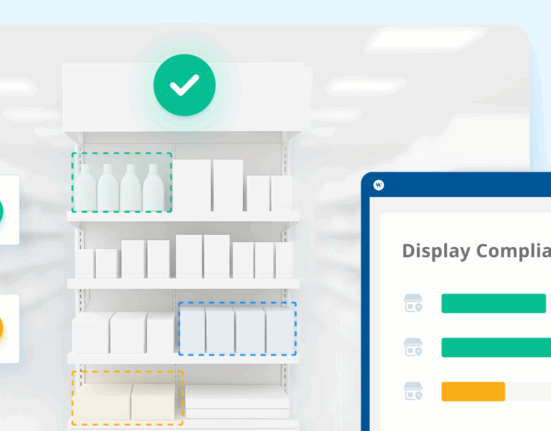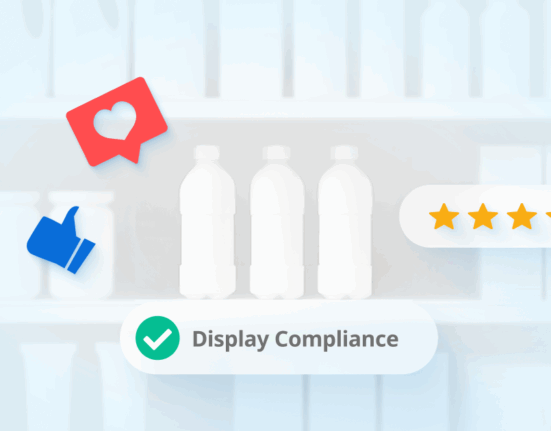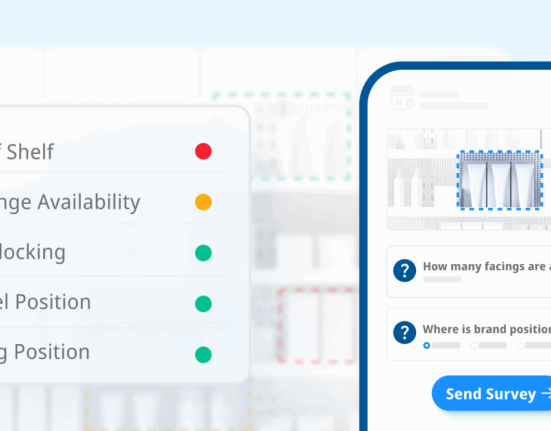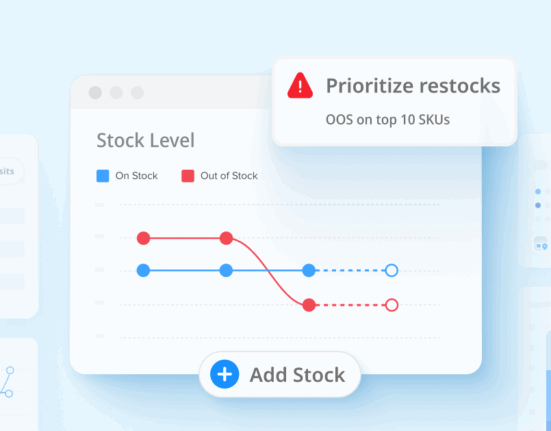En matière de tarification, il existe deux politiques de tarification très similaires, mais extrêmement différentes, qu'il convient d'envisager. Décider quelle politique est la meilleure pour vous et votre entreprise est une tâche beaucoup plus difficile, cependant.
Nous l'avons décomposé pour vous donner un aperçu des avantages et des inconvénients de chacune. Nous examinerons comment les politiques de prix MAP et MSRP se comparent et diffèrent, l'impression qu'elles laissent aux clients, et nous vous donnerons une compréhension globale de ce que chaque politique a à offrir.
MAP
Le prix minimum annoncé (MAP) désigne le montant le plus bas auquel un détaillant peut annoncer des produits, conformément à un accord avec le fabricant de la marque. Bien que le nom lui-même semble simple, les avantages et les implications de la tarification MAP pourraient faire une grande différence dans vos bénéfices et la perception de votre marque.
L'impact de votre stratégie de tarification sur vous et vos consommateurs sont deux caractéristiques très importantes qu'il est souvent difficile d'équilibrer. Connaître vos options et ce qu'elles signifient pour vous et vos clients (détaillants et consommateurs) vous aidera à choisir la meilleure méthode pour votre marque.

MAP Avantages :
Coordination transcanal
Le prix de votre produit doit être le même sur toutes les plateformes et chez tous les détaillants. Ainsi, les consommateurs n'auront plus besoin de se rendre dans plusieurs magasins pour tester le produit et rechercher d'éventuelles réductions avant de l'acheter en ligne à un prix inférieur.
Avec une politique de MAP , les consommateurs ne devraient pas avoir besoin de faire du shopping si les prix sont compétitifs sur tous les canaux. Avec le nombre de détaillants disponibles dans l'ère moderne du commerce électronique, cet avantage est plus important qu'il ne l'aurait été dans le passé.
Avec des sites web et ressources comme Google Shopping qui collectent et affichent les prix de divers détaillants en un seul endroit, le fait de savoir que vos prix ont tous le même minimum rendra la décision d'achat beaucoup plus facile pour vos consommateurs.
Si tous les produits sont proposés à un prix équitable, la concurrence entre les canaux diminue, et la fidélité des clients à la marque devrait également augmenter.
Marges bénéficiaires
Grâce aux accords MAP , vous pouvez protéger vos marges bénéficiaires en maintenant un prix minimum parmi tous les détaillants qui vendent votre produit. Tant que votre politique MAP est maintenue, un produit conservera sa valeur au fil du temps.
Si un revendeur tente de faire de la publicité pour votre produit avec une remise supérieure à celle autorisée par votre politique MAP , le bon logiciel de surveillance MAP sera en mesure de vous alerter de cette violation de politique afin que votre entreprise puisse prendre des mesures.
Le fait de disposer d'un produit qui conserve sa valeur profite aussi bien aux marques qu'aux détaillants, car les marges bénéficiaires seront maintenues tandis que les ventes continueront de croître, augmentant ainsi les achats des détaillants auprès du fabricant. Pour toutes les parties, la tarification sur MAP peut être gagnante si elle est correctement appliquée.
MAP Inconvénients :
Contrôle et application
Pour tirer véritablement parti de la politique du site MAP , celle-ci doit être strictement appliquée. Qui plus est, elle doit être appliquée de la même manière par tous les détaillants.
Pourquoi cela peut-il être un inconvénient ? Les détaillants importants et puissants peuvent ne pas coopérer avec la politique et dans ce cas, vous devez décider s'il faut prendre des mesures contre ces détaillants, même (et surtout) s'ils sont vos meilleurs clients.
Cette décision pourrait nuire à vos projets commerciaux avec ce détaillant et avoir un impact négatif sur vos ventes.

Vendeurs non autorisés
Certains consommateurs ont tendance à se méfier des produits de marques connues dont le prix est plus bas sur le marché, car ils craignent que le produit soit "faux" ou de moindre qualité. Cependant, il arrive que le prix inférieur suffise à les attirer et que ces acheteurs se rendent compte qu'ils ont été escroqués ou qu'on leur a menti sur la qualité des produits qu'ils ont achetés.
Les fabricants doivent être conscients des vendeurs non autorisés dès qu'ils apparaissent afin d'agir en cas de besoin. La perception des consommateurs peut en prendre un coup lorsque les revendeurs commencent à ternir la réputation d'une marque avec des produits défectueux ou faux. Les clients perdent confiance dans leur capacité à acheter en toute sécurité auprès de votre marque.
MSRP
D'autre part, nous avons le PDSF comme autre option de prix qui est similaire mais avec quelques distinctions. Le prix de détail suggéré par le fabricant est, comme son nom l'indique, le prix auquel le fabricant suggère de vendre un produit. Il aide les détaillants à fixer les prix de vos produits et donne au client le sentiment de payer un prix équitable.
On peut également parler de prix de liste ou de prix affiché, l'objectif étant que vos produits soient listés à un prix similaire chez tous les détaillants.
Comme la tarification MAP , cette politique présente des avantages et des inconvénients qu'il faut connaître et comprendre avant de décider de la stratégie qui vous convient le mieux.
Avantages du MSRP :
Avantages pour les consommateurs
Le fait que le prix PDSF soit indiqué alors que les détaillants vendent juste en dessous ou à ce prix donne aux clients un sentiment de satisfaction au moment de l'achat. Ils savent qu'ils obtiennent un prix juste (ou meilleur) en comparant avec la recommandation du PDSF.
Particulièrement important dans la vente de voitures, ce prix est utilisé par les clients pour s'aider à obtenir un prix juste avant de faire un achat.
Pour certains acheteurs, le prix d'un produit peut donner l'impression d'être directement lié à la qualité et à la valeur de ce produit.
Avantages économiques
Si l'économie connaît un ralentissement, ou est particulièrement "léthargique", le PDSM peut être bénéfique pour les détaillants car ils auront la possibilité d'inscrire le produit en dessous du prix suggéré pour écouler les stocks beaucoup plus rapidement que si les produits étaient vendus au-dessus du PDSM.
Si cela peut être avantageux pour les détaillants en termes de déplacement des stocks, cela peut également être considéré comme un inconvénient pour le fabricant qui verra ses marges bénéficiaires diminuer avec la baisse des prix. Cependant, la polyvalence et l'adaptabilité sont les principaux avantages de l'utilisation d'une stratégie PDSF.

Inconvénients du MSRP :
Inconvénients pour les consommateurs
Si le MSRP peut profiter aux consommateurs, comme nous l'avons vu plus haut, il présente également certains inconvénients.
Une différence essentielle entre MAP et le PDSF est que tous les détaillants n'utiliseront pas le PDSF suggéré par votre marque, ce qui signifie que tous les clients ne paieront pas le même prix.
Comme le PDSF n'est qu'un prix suggéré, les détaillants peuvent fixer un prix beaucoup plus élevé que celui suggéré. Cela peut avoir l'effet inverse sur les consommateurs et leur porte-monnaie. De nombreux détaillants ne fixent un prix inférieur au PDSF que lorsque le produit est en promotion et que le détaillant a besoin de réaliser des ventes plus rapides.
Perception du produit
Pour certains acheteurs, le prix d'un produit peut donner l'impression d'être directement lié à la qualité et à la valeur de ce produit.
Les produits dont le prix est inférieur au PDSF, pour quelque raison que ce soit, peuvent perdre de la valeur aux yeux du client. C'est surtout vrai pour les produits qui ne sont pas indispensables, mais que les gens veulent.
Une baisse des prix peut entraîner une diminution de la valeur perçue de la marque, ce qui pourrait nuire aux futures marges bénéficiaires des fabricants et à leur image de marque.
Quelle méthode vous convient le mieux ?
La réponse à cette question dépend principalement de vos besoins en matière de tarification, de la manière dont vos concurrents fixent le prix de leurs produits et, surtout, de l'impact que chaque méthode aura sur votre entreprise.
Les différents secteurs d'activité tireront davantage profit de chaque méthode de tarification en fonction des lois et des stratégies de tarification déjà en place.
Avec cette liste, nous n'avons fait qu'effleurer la surface. MAP et MSRP sont des stratégies de tarification complexes, et celle que vous choisirez transformera la façon dont vous faites des affaires.
Note de la rédaction : la rédactrice collaboratrice est Alexandria Flores. Ce post a été initialement publié en août 2018 et a depuis été mis à jour et rafraîchi pour des raisons de lisibilité et d'exactitude18.









